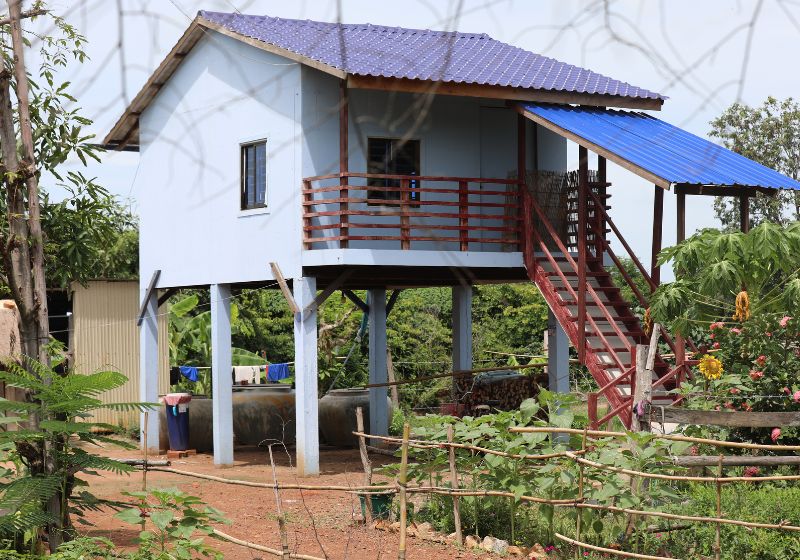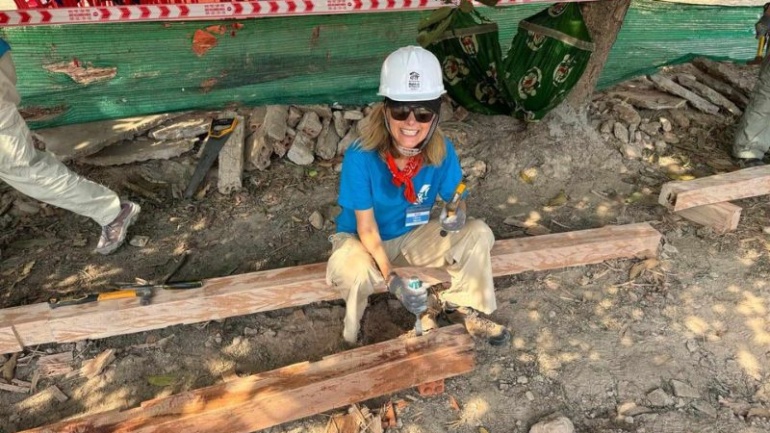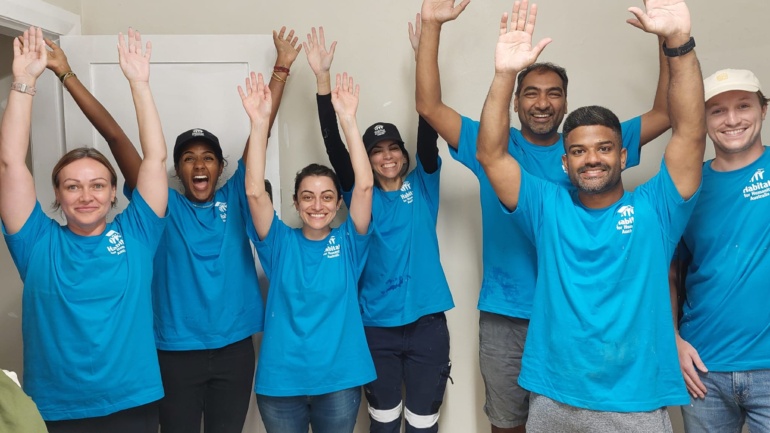Our Framework
Our Monitoring, Evaluation, Accountability and Learning (MEAL) approach is aligned with Habitat for Humanity Australia’s Strategic Plan, Australian Programs Theory of Change and International Programs Development Effectiveness Framework, supporting our three core outcome areas:
- Build more and better homes – expanding access to resilient, sustainable and affordable housing.
- Transform housing systems – influencing policy and systems to improve housing access and quality.
- Inspire action for housing – mobilising volunteers and supporters to drive impact.
Each program includes specific outcomes and indicators to track progress toward these goals.
Evaluation Across the Program Lifecycle
- Pre-Project Design: All projects undergo a rigorous participatory design and appraisal process. MEAL resources are embedded from the outset to ensure robust impact measurement systems.
- During Implementation: Programs are monitored regularly, with adaptive management practices to respond to local contexts and changes. We apply clear standards and conduct periodic assessments of outputs and outcomes.
- Post-Project Evaluation: We conduct end-of-program evaluations to assess effectiveness, sustainability and impact. Findings and learnings are shared with stakeholders and used to inform future programming improvements. We plan long term interconnected program phases that apply learnings and best practices for continuous improvement.
Accountability and Learning
Habitat for Humanity Australia promotes transparency and shared accountability by:
- Engaging communities, partners and governments throughout the project cycle.
- Implementing accessible community and stakeholder feedback mechanisms.
- Supporting local capacity development for long-term sustainability of impacts.
- Disseminating evaluation findings to inform advocacy, regional cross-country learning and improved practice.
Summary of Evaluations and Learning this year
Evaluations completed this year were undertaken in collaboration with our partners across the region to understand the longer-term impacts of our work. This included:
- Cambodia Impact Study of Participatory Approach for Safe Shelter Awareness (PASSA) Community Led Projects (Rural and Urban): Evaluation of the effectiveness, efficiency, relevance, impact and sustainability of PASSA within rural and urban communities in Cambodia from 2016 to 2025.
- Fiji Formative Evaluation of the Participatory Approach to Community Climate Resilience (PACCR): Evaluation of the content, delivery, methods and materials of PACCR to determine effectiveness in supporting climate change knowledge, adaptation and resilience in communities, as well as its contribution to improving gender equality and disability inclusion outcomes.
- Fiji Impact Assessment of Vunuku Village Master Plan 2021-2031: Evaluation to assess the effectiveness of the Community Disaster Risk Reduction Master Plan and its implementation in enhancing community disaster preparedness and environmental sustainability in Vunuku, Fiji.
These evaluations have informed program adaptations, strengthened partnerships and contributed to sector-wide learning.
Case Study: Looking into the Vunuku Village Impact Assessment, Fiji– Locally Led Climate Resilience, Economic development and community collaboration
The Vunuku Village Disaster Risk Reduction (DRR) Master Plan 2021-2031 represents a transformative model for locally driven climate resilience. Since its inception in 2019, the community owned and devised plan has guided Vunuku’s strategic development across shelter, WASH, livelihoods and inclusive governance. The impact assessment conducted in 2024 evaluated the effectiveness, sustainability and outcomes of the plan, using mixed methods including household surveys, focus group discussions, and stakeholder interviews. The findings demonstrate how participatory planning, inclusive local leadership and community ownership catalyses measurable improvements in preparedness, infrastructure, income diversification and social inclusion.
Key Measurement and Evaluation Findings
Effectiveness
- Training Impact: 100% of surveyed households now know who to contact for construction assistance (up from 28% at baseline).
- Evacuation Preparedness: Household awareness of the community evacuation plan increased from 0% to 84%.
- Inclusive Governance: The Participatory Approach to Safe Shelter Awareness (PASSA) Committee merged into the Village Development Committee, enhancing coordination and inclusion of women and persons with disabilities.
- Community Engagement: 78% of households confirmed regular continued discussion of the DRR Master Plan in village meetings.
Impact
- Implementation Progress: 24% of DRR Master Plan activities completed, 27% ongoing, 37% pending.
- Livelihoods: Crab fattening production for improved livelihoods expanded from one to four ponds; mushroom farming and handicrafts also generate consistent income.
- Infrastructure: Renovation of the community hall with kitchen construction and solar lighting ensured a safe space for the community and improved accessibility and community collaboraiton.
- Leadership Development: Local leaders have driven inclusive planning and resource mobilisation including the formation of a women’s disability group to ensure representation in decision making and support for women living with disability.
Sustainability
- Community Ownership: 95% of households are aware of DRR activities and actively participate in implementation through fundraising and planning.
- Income Diversification: Households are increasing income streams beyond marine resources, engaging in farming, carpentry, mushroom cultivation, and small businesses for more sustainable livelihoods.
- Replication Potential: The crab fattening initiative has proved succesful as a pilot project and is now scaling to be adopted at a household-level.
Lessons Learned
- Translating the DRR Master Plan into the local language and integrating it into existing governance structures enhances uptake and effectiveness.
- Future programming should include financial literacy training in budgeting and resource management to accompany livelihoods improvements.
- Leveraging social media and existing committees supports transparency and continuity.





